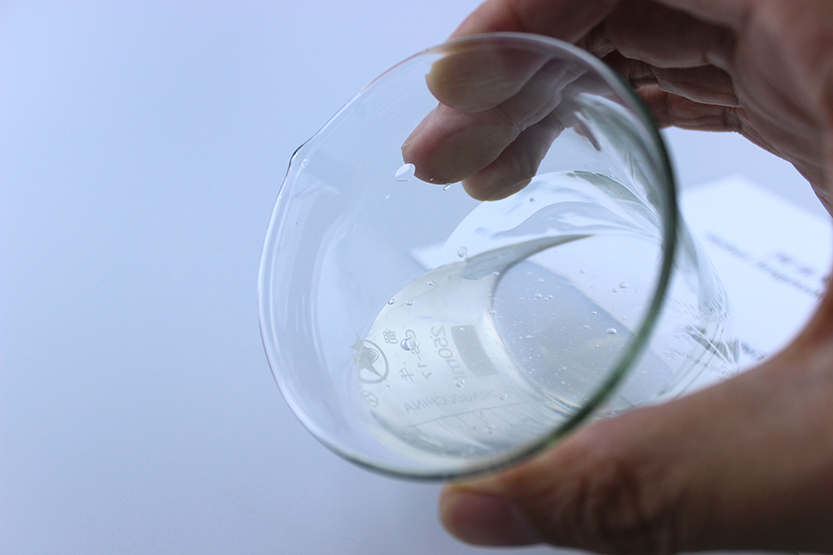
Jul . 06, 2025 07:01 Back to list
Hydroxyethyl Cellulose Formula Chemical Properties & Manufacture Guide
- Introduction to the Hydroxyethyl Cellulose Formula
- Chemical Composition and Structural Insights
- Manufacturing Process: How Is Hydroxyethyl Cellulose Made?
- Performance Data and Technical Advantages
- Leading Manufacturers Comparison: Quality, Pricing, Reliability
- Customized Solutions for Varied Industries
- Conclusion and Future Prospects for Hydroxyethyl Cellulose Formula

(hydroxyethyl cellulose formula)
Introduction: Unveiling the Hydroxyethyl Cellulose Formula
Hydroxyethyl cellulose formula stands at the forefront of cellulose derivatives due to its remarkable versatility and functional benefits in numerous industrial applications. From paint thickeners to personal care products, its unique balance of solubility, rheology modification, and stability renders it a core material in modern formulations. This comprehensive analysis sheds light on the chemical structure, manufacturing methods, competitive landscape, customization opportunities, and real-world application cases that collectively define the hydroxyethyl cellulose formula
. The ensuing sections provide in-depth technical, commercial, and performance-focused insights poised to empower procurement teams, formulation chemists, and supply managers alike.
Chemical Composition and Structural Insights
The hydroxyethyl cellulose chemical formula is typically represented as C2H6O2(C6H10O5)n, where “n” denotes the degree of polymerization. This cellulose ether derivative is formed when ethylene oxide reacts with the hydroxyl groups of cellulose under alkaline conditions, resulting in hydroxyethyl substitution on the anhydroglucose units of the cellulose chain. The variable hydroxyethyl molar substitution confers solubility in cold and hot water, the primary trait distinguishing hydroxyethyl cellulose from other nonionic cellulose ethers. Its semi-crystalline structure manifests a balance between hydrophobic and hydrophilic sites, making it highly compatible with a broad range of solubilized and suspended actives. Importantly, the viscosity, tolerance to electrolytes, pH stability, and film-forming properties are tuned via the degree of substitution and molecular weight, offering suppliers and formulators a significant degree of formulation flexibility.
Manufacturing Process: How Hydroxyethyl Cellulose Is Made
The manufacture of hydroxyethyl cellulose is a multi-step process governed by stringent process controls to achieve reproducible quality. Starting with refined cellulose fibers (generally sourced from wood pulp or cotton linters), the fibers are first treated with a sodium hydroxide solution to activate the reactive sites. Ethylene oxide is then added under controlled temperature and pressure, enabling etherification and the addition of hydroxyethyl groups. The resultant crude mass is neutralized, washed to remove by-products such as sodium chloride and unreacted alkali, then purified and dried. The dried product is milled to obtain the desired particle size distribution. Critical variables during manufacturing include the molar substitution ratio, reaction temperature, time, and the extent of washing, each affecting the final product’s performance. Strict adherence to process parameters results in products that meet regulatory requirements and provide superior functional consistency for end-users. Automation and inline quality monitoring further ensure batch-to-batch uniformity, allowing manufacturers to scale production while preserving performance.
Performance Data and Technical Advantages
The hydroxyethyl cellulose formula exhibits an impressive set of performance attributes, making it a staple in personal care, construction, paint, and pharmaceuticals. Most grades dissolve rapidly, yielding clear, homogeneous solutions with precisely controlled viscosities. Typical HEC grades at 1% solution concentration can achieve viscosities from 5 to over 5,000 mPa·s (Brookfield, 25°C), suitable for a gamut of texturizing and thickening needs. Its non-ionic nature imparts exceptional salt and pH tolerance; for instance, HEC formulations maintain over 90% of their original viscosity between pH 2–12 and in high salt media, outperforming alternatives like CMC and HPMC. Furthermore, HEC’s synergy with associative thickeners enhances shear-thinning behavior crucial for paints and personal care products. According to a 2023 market report, HEC demand grows by 5.2% annually, driven by increased use in advanced waterborne coatings and shale gas fracturing fluids. Enhanced water retention, improved workability, and broad compatibility make it a preferred solution for demanding applications requiring stable rheology and structure.
Leading Manufacturers Comparison: Quality, Pricing, Reliability
Selecting the right supplier is paramount for sourcing hydroxyethyl cellulose with assured quality, optimal pricing, and reliable logistics. Below is a comprehensive comparison of three global manufacturers based on critical performance and service criteria:
| Manufacturer | Viscosity Range (mPa·s at 1%) | Purity (%) | Price (USD/kg) | Lead Time (days) | Certifications | Key Applications |
|---|---|---|---|---|---|---|
| DOW Chemical | 5–6,000 | ≥99.0 | 4.30–5.00 | 14–21 | ISO 9001, NSF, REACH | Paints, Oilfield, Personal Care |
| Ashland Global | 10–5,000 | ≥98.5 | 4.45–5.10 | 18–28 | ISO 9001, Kosher, Halal | Cosmetics, Mining, Food |
| Lotte Fine Chemical | 20–4,500 | ≥99.2 | 4.20–5.10 | 10–17 | ISO 9001, FDA, GMP | Pharmaceuticals, Construction |
Data indicates that all three suppliers provide high-purity HEC, with DOW and Lotte Fine Chemical leading in technical certifications and shortest lead times. Ashland, meanwhile, offers flexible kosher and halal options for specific regulated markets. Pricing remains competitive due to globalized manufacturing footprints, but final selection often hinges on proximity to the end-user, logistics support, and specialty technical support.
Customized Solutions for Varied Industries
The need for customized hydroxyethyl cellulose solutions has surged in tandem with product innovation and regulatory compliance across industries. Leading suppliers now offer bespoke grades tailored for paint and coatings (optimized for pigment suspension and anti-sagging), construction products (enhanced workability in tile adhesives, mortars, and EIFS), oilfield chemicals (stable viscosifiers for fracturing fluids), and personal care (smooth sensory and clarity in shampoos and lotions). Tailoring can involve adjustments to particle size, degree of substitution, rate of hydration, or surface treatments—each engineered to elevate end-product functionality. In particular, digital twin modeling and pilot-scale reactors have revolutionized new grade development by closely mimicking large-scale production conditions before commercialization, reducing scale-up risks.
Application case studies have shown that using a customized HEC grade in a latex interior paint can boost pigment suspension stability by up to 30% compared to generic grades, allowing for a reduction in surfactant and anti-settling additives. In the personal care sector, finely-tuned low-viscosity HEC enables clear gel formation in hair gels and serums with improved ease of application and residue-free rinsing—a clear competitive advantage for premium product launches. In large-scale construction, modified HEC improves water retention, decreases cracking, and significantly enhances workability, reducing mixing time by 20%. Industrial partnerships between leading manufacturers and fast-moving consumer goods (FMCG) brands now routinely incorporate co-development projects, ensuring targeted performance criteria are met.
Conclusion: The Future Prospects for the Hydroxyethyl Cellulose Formula
In summary, the hydroxyethyl cellulose formula delivers an exceptional blend of functionality, customizability, and cost-effectiveness to modern manufacturing sectors. As more industries transition towards sustainable, water-based systems and heightened regulatory scrutiny, the demand for purer, more efficient, and tailor-made HEC grades is projected to intensify. Innovators in material science are already engineering next-generation hydroxyethyl cellulose with enhanced biodegradability, ultra-low dust, and smart rheology control to fulfill the evolving expectations of formulators and regulators. Strategic partnerships and technological investments by major chemical manufacturers are catalyzing the expansion of application domains, from advanced medical hydrogels to high-performance additive manufacturing. In this dynamic environment, leveraging the benefits of hydroxyethyl cellulose formula will remain pivotal for achieving superior product quality, operational efficiency, and sustainable business growth.

(hydroxyethyl cellulose formula)
FAQS on hydroxyethyl cellulose formula
Q: What is the chemical formula of hydroxyethyl cellulose?
A: The chemical formula of hydroxyethyl cellulose is typically represented as C2H6O2·x(C6H10O5). It is a cellulose derivative with hydroxyethyl groups attached to the main chain.Q: What does "hydroxyethyl cellulose formula" mean?
A: "Hydroxyethyl cellulose formula" refers to the molecular structure or chemical representation of hydroxyethyl cellulose. It shows how hydroxyethyl groups are linked to a cellulose backbone.Q: How is hydroxyethyl cellulose made?
A: Hydroxyethyl cellulose is made by reacting cellulose with ethylene oxide in an alkaline medium. This process attaches hydroxyethyl groups to the cellulose chains for improved solubility.Q: What are the main components in hydroxyethyl cellulose's chemical formula?
A: The hydroxyethyl cellulose chemical formula typically consists of glucose units from cellulose with hydroxyethyl groups (-CH2CH2OH) added. The addition gives it unique properties compared to pure cellulose.Q: Why is knowing the hydroxyethyl cellulose formula important?
A: Understanding the hydroxyethyl cellulose formula helps determine its chemical behavior and potential uses. It aids in quality control for industrial and pharmaceutical applications.-
Versatile Hpmc Uses in Different Industries
NewsJun.19,2025
-
Redispersible Powder's Role in Enhancing Durability of Construction Products
NewsJun.19,2025
-
Hydroxyethyl Cellulose Applications Driving Green Industrial Processes
NewsJun.19,2025
-
Exploring Different Redispersible Polymer Powder
NewsJun.19,2025
-
Choosing the Right Mortar Bonding Agent
NewsJun.19,2025
-
Applications and Significance of China Hpmc in Modern Industries
NewsJun.19,2025







